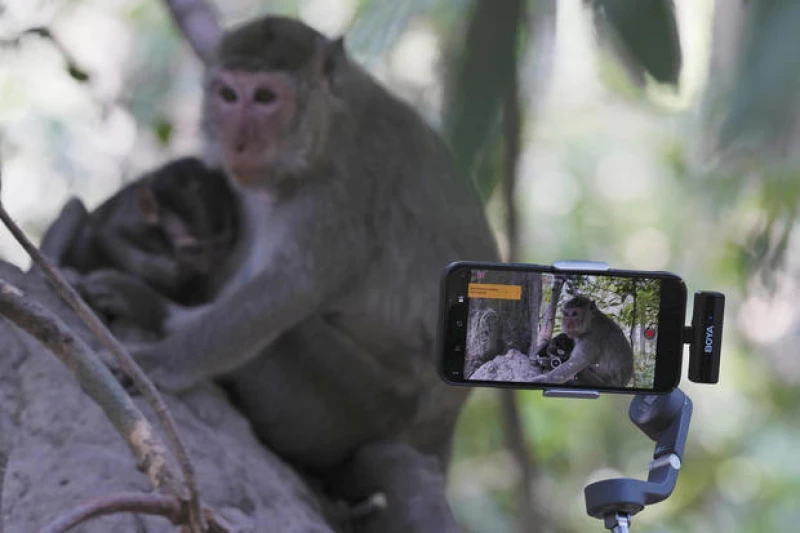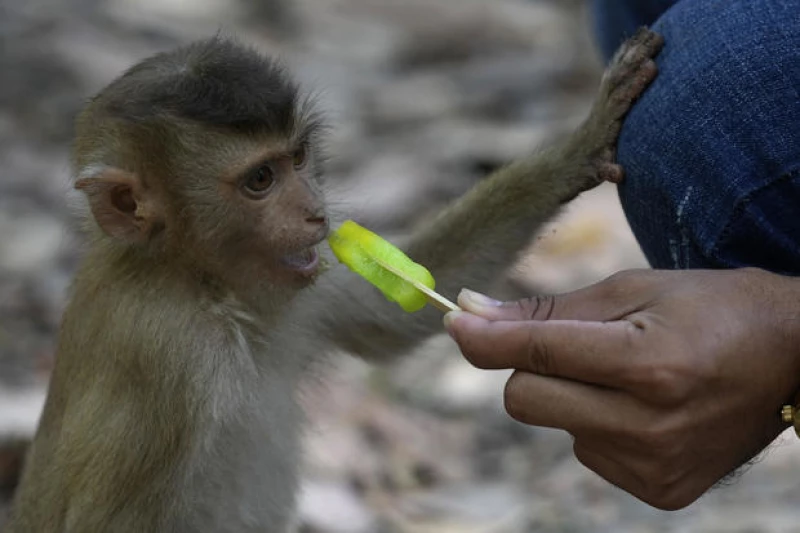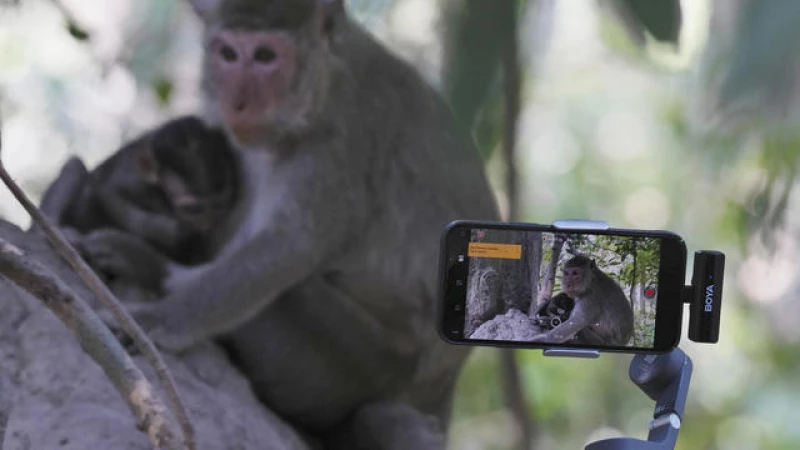Monkey Abuse at Angkor UNESCO World Heritage Site
Siem Reap, Cambodia — Shocking videos have emerged showing the abuse of monkeys at the Angkor UNESCO World Heritage Site in northwestern Cambodia. In one video, a baby monkey is seen struggling as a man holds it by the neck over a concrete cistern, repeatedly dousing it with water. Another clip shows a person playing with the genitals of a juvenile male macaque to get it excited for the camera.
Authorities have expressed concern that such incidents are on the rise as individuals seek to attract online viewers in order to make money. Long Kosal, spokesperson for APSARA, the Cambodian office responsible for overseeing the Angkor archaeological site, stated, "The monkey should be living in the wild, where they are supposed to be living, but the monkey nowadays is being treated like a domestic pet. They're making the content to earn money by having the viewers on YouTube, so this is a very big issue for us."

APSARA is facing challenges in stopping YouTubers from filming in general, but has initiated an investigation with the Ministry of Agriculture to gather evidence for legal action against the most severe offenders — who are seldom seen on camera themselves, as per Long Kosal.
"If we can establish a case, they will be apprehended without a doubt," he stated. "Any individual who abuses animals will face severe legal consequences in Cambodia."
Cambodia's struggle against YouTube animal abusers is not unique and has been observed in other parts of Asia. Just last year, a global network accused of creating and disseminating horrifying videos of monkeys being tortured and even killed was uncovered by a BBC World Service investigation. Approximately 20 individuals in the United States and two in Indonesia were under investigation, including an Oregon resident who was indicted in June 2023.
The investigation revealed that numerous customers in the U.S. and other countries had joined social media groups dedicated to sharing the distressing content and were paying to witness the abuse of long-tailed macaques, even requesting specific forms of cruelty.
Despite YouTube, Facebook, and other platforms removing videos with graphic content, numerous clips featuring adorable monkeys frolicking and playing continue to exist on these platforms, amassing thousands of views and subscribers.
Just making those videos involves very close interaction with the monkeys, however, which authorities and animal-rights activists say creates a host of other problems, both for the macaques and people visiting one of Southeast Asia's most popular tourist sites.
On a recent day outside Angkor's famous 12th-century Bayon Temple, at least a dozen YouTubers, all young men, crowded around a small group of long-tailed macaques, pushing in close to get shots of a mother with a baby on her back and tracking her everywhere she moved.
The wild monkeys feasted on bananas tossed to them by YouTubers and drank from plastic bottles of water. One young macaque briefly amused itself with half-eaten neon-green popsicle discarded at the side of the path, before dropping it to move on to a banana.
A blue-shirted APSARA warden looked on but those filming were unfazed, illustrating the main problem: Simply taking video of monkeys is okay, even though feeding them is frowned upon. At the same time, it's making them dependent upon handouts, and the close interaction with humans means they're increasingly becoming aggressive toward tourists.
"The tourists carry their food, and they would snatch the food," Long Kosal said, flipping through multiple photos on his phone of recent injuries caused by the macaques. "If the tourists resist, they bite and this is very dangerous."

The Monkey Dilemma at Ancient Sites
As tourists flock to ancient sites, such as the ones surrounded by jungles, the search for food also lures monkeys, causing potential harm to the historical temples. Monkeys have been spotted pulling away pieces of the temples and causing damage, raising concerns among visitors and tour guides.
One tourist, Cadi Hutchings, heeded the warning of her tour guide about the increasing risk of being bitten and made sure to keep her distance from the monkeys. "What they want is your food, but you also need to appreciate that there needs to be a boundary between human intervention in nature," she remarked, emphasizing the importance of respecting the wildlife.
Despite the warnings, many other tourists engaged with the monkeys, taking photos, videos, and even offering bananas to draw the animals closer. YouTuber Ium Daro, known for filming Angkor monkeys, followed a mother and baby monkey closely with his iPhone on a selfie stick to capture intimate footage.
While some express concerns about the impact of human interaction on the monkeys and the historical sites, others like Daro defend their actions, stating that they are simply trying to make a living and have not witnessed any physical abuse towards the animals.
"The monkeys here are friendly," he said. "After we take their pictures we give them food, so it is like we pay them for them giving us the chance to take their picture."
As he spoke, a young macaque scrambled up the leg of an onlooker, trying — unsuccessfully — to grab a plastic bottle of water out of his pocket.
One YouTuber said he had started filming monkeys during the COVID-19 pandemic after the numbers of tourists plummeted, making it impossible to earn a living as a tuk-tuk driver.
Daro said he was looking for a way to supplement his income as a rice vendor, and that he's too new at it to have realized many returns.
Many, like Phut Phu, work as salaried employees of YouTube page operators. The 24-year-old said he started filming monkeys 2 1/2 years ago when he was looking for a job in the open air to help him deal with a lung problem.

He's generally at it daily from 7 a.m. to 5 p.m., earning $200 a month — equivalent to a Cambodian minimum-wage job — and said he hoped authorities wouldn't try and put an end to it.
"I need these monkeys," he said, holding a Nikon Coolpix camera with an extreme zoom that his employer provided, the same model most of the YouTubers were using.
Dealing with the challenges of identifying and apprehending those responsible for the physical mistreatment of the monkeys, along with the allure of quick profits from YouTube videos, Long Kosal acknowledged that APSARA faces a daunting task.
"This is a major issue for us," he explained. "We must establish strong grounds to deter individuals from creating abusive content involving the monkeys."
Nick Marx, the director of wildlife rescue and care at the Wildlife Alliance, an organization that executes conservation initiatives throughout Southeast Asia and aids in reintroducing wildlife to Angkor, believes the solution is straightforward yet hard to achieve.
"The primary issue is that these videos are produced for financial gain," he stated in an interview from Phnom Penh. "If individuals who oppose such practices would refrain from viewing these videos, it could significantly contribute to addressing the problem of animal abuse."







